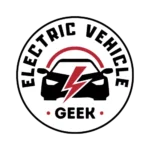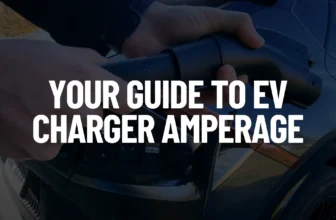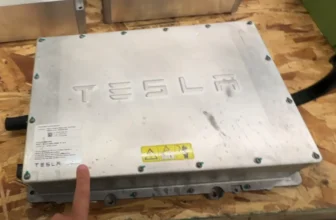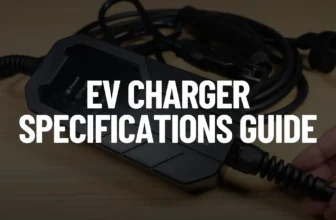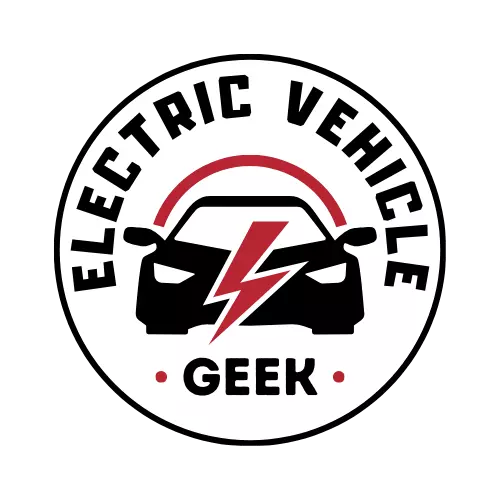EV charging switchgear plays a critical role in power distribution and control for electric vehicle (EV) charging stations, especially in multi-charger installations. It acts as a central hub, ensuring:
- Safe and reliable power distribution: EV charging switchgear manages incoming power, distributes it efficiently to individual chargers, and offers robust protection against electrical faults.
- Optimized system performance: EV charging switchgear enhances the overall system performance of an electrical vehicle branch circuit by providing monitoring capabilities and facilitating maintenance.
Table of Contents
- Applications of EV Charging Switchgear
- What is EV Charging Switchgear?
- Types of EV Charging Switchgear
- Functions of EV Charging Switchgear
- Importance of EV Charging Switchgear
Applications of EV Charging Switchgear
EV charging switchgear is indispensable in commercial settings and residential complexes with multiple EV charger installations, optimizing performance and ensuring reliable power delivery to numerous charging ports.
Multi-Unit Dwelling EV Charger Installation
In apartment buildings or communities with multiple EV charging ports, an EV charging switchgear manages power distribution to individual home EV chargers in each residential complex.
Commercial EV Charging Stations
In commercial settings, EV charging switchgear ensures safe and efficient power distribution to multiple DC fast chargers.
The image below shows an outdoor public EV charging station components connected to the EV charging switchgear through power supply cables (phase, neutral, ground), control cables, and grounding electrode cables enclosed in an underground conduit.
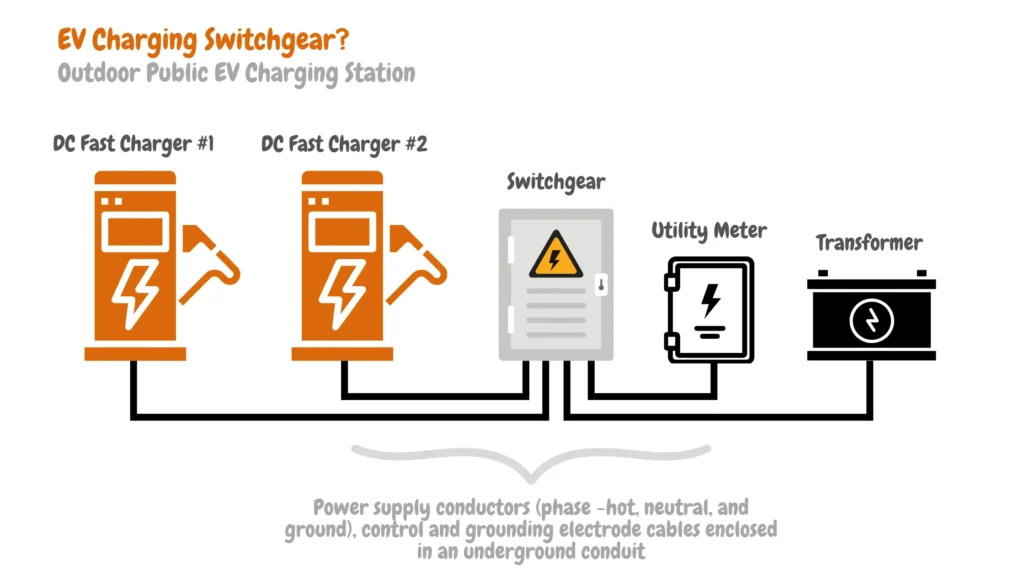
The transformer converts incoming power to usable voltage for the EV charging station (480 VAC power to 120/240 VAC), the switchgear then safely distributes power to two designated DC Fast Chargers labeled #1 and #2. the work of the Utility meter connected to the switchgear is to measure the total electricity used by the charging station
In this blog post, we will highlight the different types of EV charging switchgear, functions, and benefits of integrating EV charging switchgear in modern EV charger installations.
What is EV Charging Switchgear?
An EV charging switchgear refers to the collection of electrical devices in an electric vehicle branch circuit that manages, protects, and controls electrical power distribution while providing a mechanism for isolating EV charging faults from the electric vehicle branch circuit.
EV Charging Switchgear Components
EV charging switchgear houses essential electrical components like EV charger circuit breakers, fuses, relays, and disconnect switches to manage power flow and protect against overloads and faults. Surge protection devices and a robust grounding system further enhance safety.
The specific components vary depending on the station’s size and complexity but collectively ensure a smooth and reliable charging experience.
Types of EV Charging Switchgear
EV charging switchgear used in electric vehicle charging stations is classified based on their voltage levels, different types of EV charging switchgear include:
Low Voltage EV Charging Switchgear
Low voltage (LV) EV charging switchgear is used for voltage levels up to 1000V, this means they can be able to manage multiple chargers such as 1-4 Level 2 EV chargers (240V) or 1-2 Level 3 EV chargers (400V-1000V) depending on the system amperage, individual circuit breaker limitations, cable size, and length, and specific charger models.
Low voltage (LV) EV charging switchgears are mainly used in residential EV charger installations and small commercial EV charger installations.
Medium Voltage EV Charging Switchgear
Medium voltage (MV) EV charging switchgear is designed for electric vehicle branch circuits of between 1000V and 33,000V levels, they can be used to manage multiple EV chargers within complexes and commercial EV charging stations. While power distribution of 33,000V might be present for large-scale systems, they are not commonly used in EV charging.
High Voltage EV Charging Switchgear
High voltage (HV) EV charging switchgear are used in utility substations and range above 33,000V, they are not directly used in managing EV charging stations.
Functions of EV Charging Switchgear
EV charging switchgear plays a critical role in ensuring the safety, efficiency, and reliability of EV charging infrastructure. From protecting against electrical faults to enabling control and monitoring, switchgear acts as the central nervous system, orchestrating a smooth and optimal EV charging experience.

Protection of Electric Vehicle Branch Circuits.
EV Charging switchgear is the first line of defense, safeguarding EV charger circuits from various electrical issues. EV charging switchgear internal components include relays and EV charger circuit breakers designed to trip or blow in case of:
Overcurrent Protection
During peak charging times or due to vehicle malfunctions, EV chargers may draw more current than they can handle. For instance, if a fast charger intended for 50 kW operation experiences a vehicle drawing 100 kW due to a malfunction, the EV charging switchgear’s circuit breakers will trip to prevent damage to the charger and ensure safe EV charging operation.
Short Circuit Detection
In busy public charging stations, where various users frequently connect and disconnect their vehicles, accidental short circuits can occur. If a user inadvertently causes a short circuit by damaging the connector or cable, the switchgear quickly detects this fault and isolates the affected circuit to prevent damage and ensure the safety of subsequent users.
Ground Fault Protection
EV charging stations often face the risk of ground faults due to environmental factors or equipment wear. For example, if moisture or debris causes a leakage path from the charging circuit to ground, the switchgear’s ground fault protection mechanisms detect this anomaly and immediately interrupt the circuit to prevent electric shocks and ensure user safety.
Isolation of Electric Vehicle Branch Circuits.
During maintenance or repairs on multiple EV charger circuits, complete isolation from the power source is crucial for an electrician or certified EV charger installer safety. An EV charger switchgear allows for de-energizing and isolating individual EV charger circuits, minimizing downtime and ensuring a safe working environment for EV charger installation technicians.
Control of Electric Vehicle Branch Circuits.
An EV charging switchgear provides the ability to control the flow of electricity to individual EV charger circuits in multiple EV charger circuits. This allows for:
Multiple EV Chargers Load Management
At a commercial EV charging station with multiple chargers, the switchgear allows operators to dynamically manage power distribution. For example, during periods of high demand or peak electricity pricing, operators can prioritize charging for certain vehicles while adjusting power allocation to others. This load management capability helps optimize energy usage, reduce operational costs, and ensure efficient use of available electrical capacity.
A shopping mall’s EV charging station utilizes an EV charger switchgear to allocate more power to fast chargers during busy shopping hours, ensuring efficient charging for customers while managing overall electricity demand.
EV charging Station Remote Control
Modern EV charging switchgear often includes remote control features. Operators can monitor charging status, adjust power settings, and perform emergency shutdowns remotely from a central control room or through a web-based interface. This capability enhances operational efficiency and allows for rapid response to maintenance needs or electrical faults without on-site intervention.
An EV charging network operator oversees multiple stations across a city. Using remote-controlled switchgear, they can remotely diagnose and resolve issues, such as resetting a circuit breaker or adjusting charging rates, minimizing downtime and ensuring continuous service for EV users.
Monitoring of Electric Vehicle Branch Circuits.
Advanced switchgear can be equipped with monitoring systems that provide real-time data on:
Advanced switchgear in EV charging stations can include monitoring systems that provide real-time data on:
- Voltage and Current Levels: Monitoring these parameters helps identify potential issues such as voltage fluctuations or overloading conditions. For example, if a fast charging station detects voltage drops during peak usage times, the switchgear’s monitoring system can alert operators to adjust power distribution or investigate grid stability issues.
- Equipment Health: Switchgear health data can reveal potential problems with internal components, enabling preventive maintenance to avoid unexpected downtime. Continuous monitoring may detect early signs of wear or overheating in circuit breakers or relays, allowing operators to schedule timely replacements or repairs and ensure uninterrupted charging services.
Monitoring capabilities of an EV charging switchgear ensure the reliability and optimal performance of EV charging stations, enhancing operational efficiency and user satisfaction.
Importance of EV Charging Switchgear
Safety of EV Charging Stations
EV charging involves high currents, and switchgear acts as the first line of defense against potential electrical faults. Circuit breakers and fuses within the switchgear are designed to trip or blow in case of overcurrents, short circuits, and ground faults.
During maintenance or repairs on an EV charger circuit, complete isolation from the power source is crucial. Switchgear allows for de-energizing and isolating specific circuits, minimizing downtime and ensuring a safe working environment for technicians.
Reliability of EV Charging Stations
EV charging switchgear’s ability to isolate faulty sections prevents cascading failures and ensures a swift recovery when issues arise. This translates to minimal downtime for charging stations, guaranteeing uninterrupted service for EV users.
Advanced EV charging switchgears can be equipped with monitoring systems that provide real-time data on voltage, current levels, and equipment health. This capability allows for proactive maintenance, identifying potential problems before they cause outages.
Compliance with Safety Standards and Regulations
Public EV charging stations operate within a strict framework of safety regulations established by national and international bodies. These regulations, often outlined in documents like the National Electrical Code (NEC) in the US, dictate critical aspects like grounding, fault protection, and overall EV charging station integrity. EV charging switchgear plays a pivotal role in facilitating compliance with these standards.
By incorporating robust fault detection and isolation mechanisms, EV charging switchgear safeguards not only the charging infrastructure but also the well-being of users. This proactive approach minimizes the risk of electrical accidents and potential injury, mitigating liability concerns for station operators. Additionally, proper switchgear design and maintenance contribute to a demonstrably safe charging environment, reducing the likelihood of regulatory sanctions or costly legal disputes.
Efficiency of EV Charging Stations Installations.
EV charging switchgear grants granular control over the flow of electricity to individual charger circuits in multiple EV charger installations. This allows for dynamic power distribution, aligning with fluctuating usage patterns. During periods of low demand, power can be strategically allocated, saving energy and potentially reducing peak loads on the grid.
The scalability of EV charging infrastructure is paramount for an EV charging station investor. Fortunately, an EV charging station switchgear modular nature facilitates a future-proof EV charging station design that allows adding EV chargers as the business/ demand grows.

James Ndungu is a certified EV charger installer with over five years of experience in EVSE selection, permitting, and installation. He holds advanced credentials, including certification from the Electric Vehicle Infrastructure Training Program (EVITP) and specialized training in EV charging equipment and installation, as well as diplomas in EV Technology and Engineering Fundamentals of EVs. Since 2021, James has tested dozens of EV chargers and accessories, sharing expert insights into the latest EV charging technologies.
